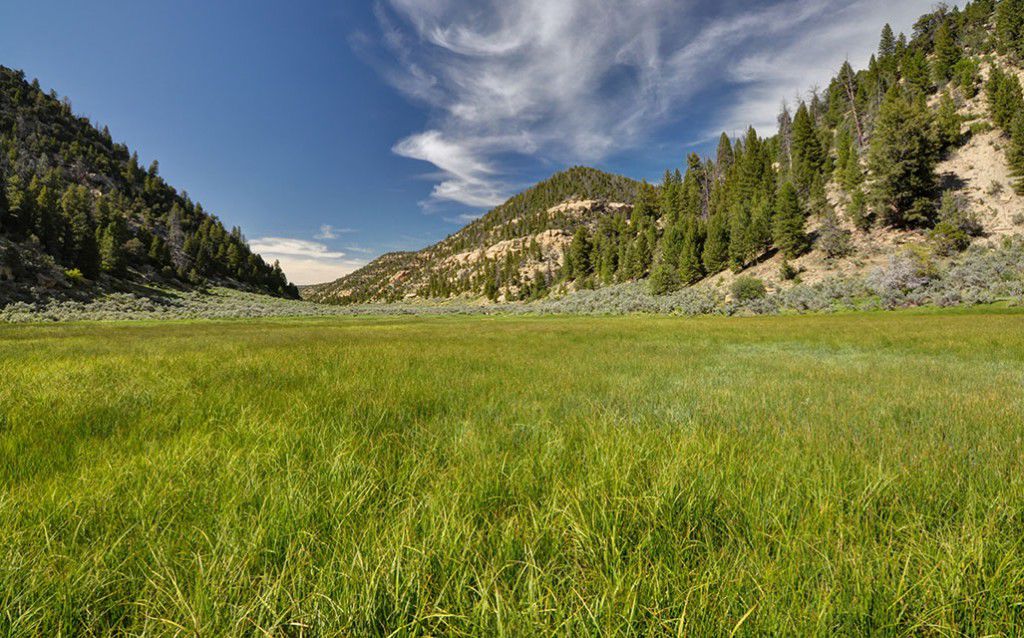Federal land managers, conservation groups and off-highway vehicle interests are ready to put more than eight years of litigation behind them.
After a protracted legal battle over the U.S. Bureau of Land Management’s (BLM’s) land-use and travel management plans for more than 10 million acres of land in Utah, the three sides announced a proposed settlement that would end the challenges.
The tentative agreement, which was reached through more than six months of negotiations that the U.S. 10th Circuit Court of Appeals’ Circuit Mediation Office oversaw, is still subject to final U.S. District Court approval.
Other intervenors, including Utah’s School and Institutional Trust Lands Administration (SITLA) and several oil and gas companies, agreed not to oppose the agreement, and the various parties involved in the litigation are now celebrating the deal.
“After more than eight years of litigation, I’m pleased to see these legal challenges put aside,” BLM-Utah State Director Ed Roberson said in a statement. “I look forward to focusing our attention and resources on managing Utah’s incredible public lands, unmatched opportunities for recreation and responsible energy development.”
Paul Turcke, who served as counsel for the Blue Ribbon Coalition and two other off-highway vehicle (OHV) groups, said he’s certain that they will “suffer no shortage” of future litigation over Utah’s public lands.
“However, in this unique situation, we chose to participate in the settlement process to prioritize and have a meaningful role in recreation management, as it becomes increasingly prominent in the spectrum of public land uses,” Turcke said.
Robin Cooley, an Earthjustice attorney who represents the conservation groups, said the proposal is good news for Utah’s “iconic” public lands, including areas surrounding Arches and Canyonlands national parks.
“(The) BLM must take a fresh look at where it will allow off-highway vehicles to drive, this time with an eye toward protecting the very things that make Utah’s redrock country so special – its wildness, opportunities for solitude, and irreplaceable archaeological sites,” Cooley said.
In consultation with Native American tribes, the State of Utah and cultural experts, the agency’s state office said it will conduct intensive, on-the-ground cultural surveys along travel routes in portions of the litigated area. Specifically, those surveys will occur along routes that have a high probability of containing cultural and historic resources.
In exchange, conservation group plaintiffs agreed to dismiss their remaining claims against six land-use and travel management plans and a November 2014 oil and gas lease sale.
The controversy surrounding the issue dates back to 2008, when an alliance of conservation groups challenged land-use and travel management plans that the agency’s field offices in eastern Utah adopted during the waning days of former President George W. Bush’s administration.
If the litigation had continued and a court ultimately sided with the conservation groups, Southern Utah Wilderness Alliance (SUWA) Legal Director Steve Bloch said that the BLM could have been ordered to redo its travel management plans for five field offices from scratch.
But under the pending settlement, he said, the agency will instead focus on specific travel management planning areas within each of those field offices’ jurisdictions.
Within the BLM’s Moab Field Office, those areas include Hatch Point/Indian Creek in San Juan County, as well as the Labyrinth Canyon/Gemini Bridges area northwest of Moab and the Dolores River area near the Utah-Colorado state line. A fourth area in the Book Cliffs northeast of Moab is largely under the jurisdiction of the agency’s Vernal office.
While other agency field offices will be revising their plans under expedited time frames, Bloch said the settlement would give the Moab office anywhere from four to eight years to complete the work, depending on the specific area.
Retired BLM employee Lynn Jackson, who served as the associate BLM Moab field manager in 2008, said he doesn’t know at this point whether the settlement would be positive or negative, since he hasn’t read it yet.
“Just, in general, at the end of a Democratic administration, there’s all of this stuff going on,” he said. “Until I see it, I’m kind of queasy about it. I hope we didn’t lose a lot more roads and trails in this part of the world.”
Bloch suggested that Jackson might be satisfied with the terms of the settlement, once he’s had a chance to read it.
“I think that comments from both SUWA and the off-road vehicle advocates squarely address Lynn’s question of, ‘Were there any closures that came about as a direct result of the settlement,’ and the answer is no,” he said.
Having said that, Bloch said the agreement could ensure that future off-road vehicle trail designations comply with the letter and spirit of federal laws in ways that mitigate impacts on cultural resources, wildlife and lands with wilderness characteristics.
“We’re hopeful and confident that when the BLM goes about their work this time around, some of the trails that are designated for motorized use may be closed because the impacts are significant and unacceptable,” he said.
Jackson said that environmentalists’ initial appeals were focused primarily on the agency’s Richfield office, which did not examine impacts on cultural resources to the same degree that the agency’s local field offices did.
“That was probably what they considered to be the weakest,” he said. “Moab and Monticello did some extra work during that process … I think we were better situated to say, ‘We’re good here.’”
OHV groups, environmentalists support travel plan settlement
For more information, go to: https://on.doi.gov/2iue4T2.




